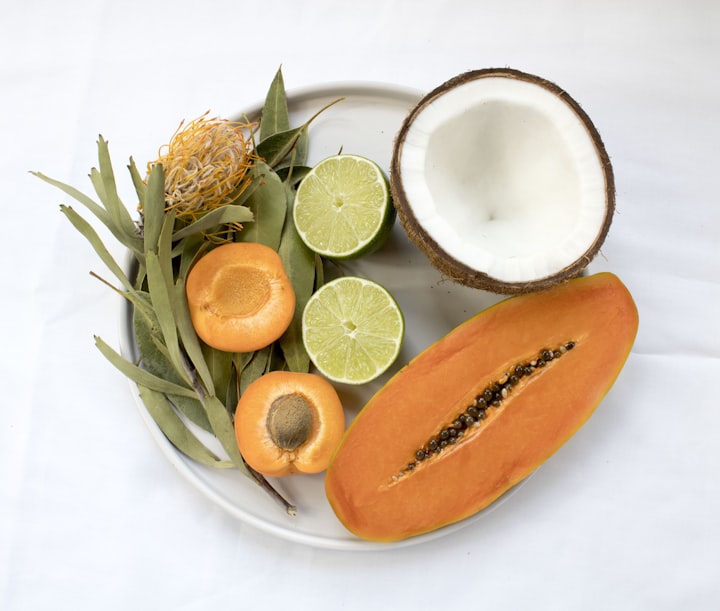How to Grow Your Own Food in a Small Space
How to Grow Your Own Food in a Small Space

If you love gardening but have limited space, you may think that you can't grow your own food. However, that's not true. You can grow a variety of vegetables, herbs, and fruits in small spaces using some creative and innovative techniques. In this article, we will share some tips and ideas on how to grow your own food in a small space.
## 1. Choose the right plants for your space and climate.
One of the first things you need to do is to choose the right plants for your space and climate. Not all plants are suitable for small spaces or containers, so you need to do some research before you buy seeds or seedlings. Some factors to consider are:
- The size and shape of the plant. Some plants, such as tomatoes, peppers, eggplants, and cucumbers, can grow well in pots or bags if they have enough depth and support. Others, such as lettuce, spinach, kale, and herbs, can grow in shallow containers or window boxes. You can also try growing dwarf or compact varieties of plants that normally take up more space.
- The amount of sunlight and water the plant needs. Some plants, such as tomatoes, peppers, and eggplants, need at least 6 hours of direct sunlight per day to thrive. Others, such as lettuce, spinach, kale, and herbs, can tolerate partial shade or indirect light. You also need to water your plants regularly and check the soil moisture frequently. Containers tend to dry out faster than garden beds, so you may need to water them every day or even twice a day in hot weather.
- The harvest time and yield of the plant. Some plants, such as tomatoes, peppers, eggplants, and cucumbers, produce fruits over a long period of time and can give you multiple harvests throughout the season. Others, such as lettuce, spinach, kale, and herbs, can be harvested multiple times by cutting off the outer leaves and leaving the inner ones to regrow. You can also choose fast-growing plants that can be harvested within a few weeks or months.
## 2. Use vertical space to maximize your growing area.
If you have a balcony, a patio, a porch, or a rooftop, you can use trellises, cages, stakes, or hanging baskets to grow plants that climb or trail. This way, you can save horizontal space for other plants and create a more attractive and productive garden. Some examples of plants that can grow vertically are:
- Peas and beans. These legumes can produce edible pods or seeds that are rich in protein and fiber. You can grow them on trellises or poles and harvest them throughout the season.
- Squash and melons. These fruits can grow on vines that can reach several feet long. You can train them on trellises or cages and support their fruits with slings or nets.
- Strawberries and raspberries. These berries can grow on runners that spread along the ground or hang from baskets. You can enjoy their sweet and juicy fruits in summer or fall.
## 3. Try hydroponics or aquaponics for soilless gardening.
If you don't have access to good quality soil or compost, you can try growing plants in water or nutrient solutions instead. Hydroponics is a method of growing plants without soil by using a medium such as perlite,
vermiculite, coco coir, or rockwool to support the roots and provide oxygen. Aquaponics is a method of growing plants and fish together in a symbiotic system where the fish waste provides nutrients for the plants and the plants filter the water for the fish.
You can buy ready-made hydroponic or aquaponic kits online or make your own using plastic containers, pumps, pipes, filters, and air stones. Some benefits of these methods are:
- They use less water than conventional gardening because the water is recycled and reused.
- They produce higher yields than conventional gardening because the plants get optimal nutrients and oxygen.
- They reduce pests and diseases because there is no soil to harbor pathogens or insects.
## 4. Conclusion
Growing your own food in a small space is possible and rewarding with some creativity and planning. You can choose the right plants for your space and climate, use vertical space to maximize your growing area,
and try hydroponics or aquaponics for soilless gardening. By doing so, you can enjoy fresh,
healthy, and delicious food from your own garden.
About the Creator
Ameer Muavia
I turn words into magic: As a content writer, I have a way with words that brings your brand to life. Let's make some magic together.






Comments
There are no comments for this story
Be the first to respond and start the conversation.